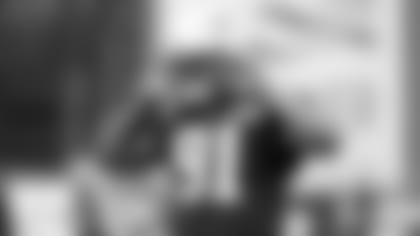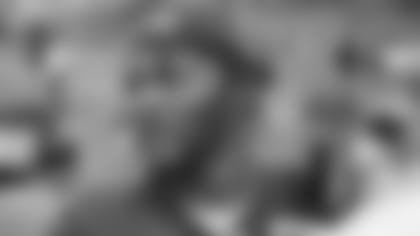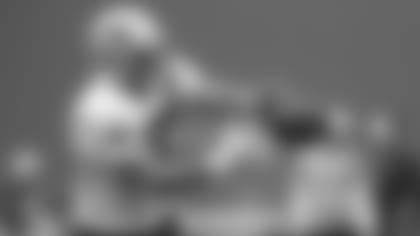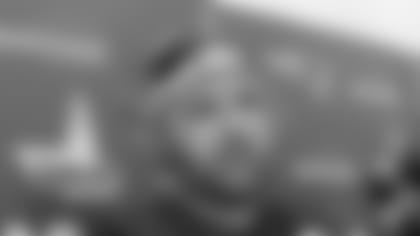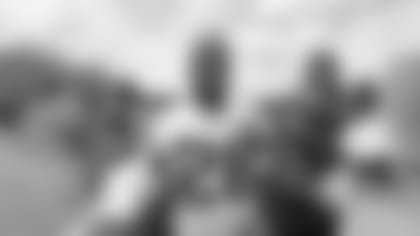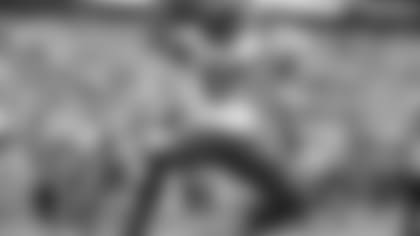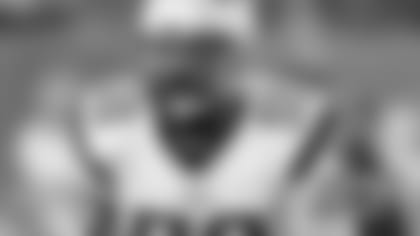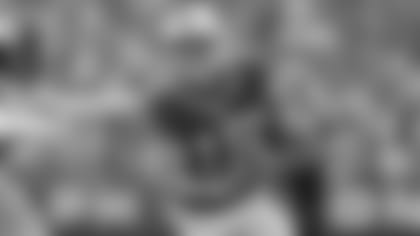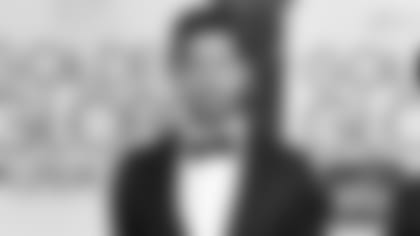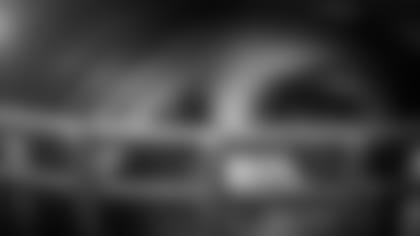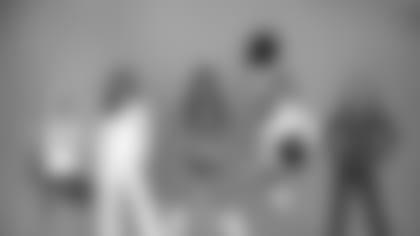New England Patriots head coach Bill Belichick addreses the media during his press conference at Gillette Stadium on Wednesday, July 30, 2008.
BB: We just had our team meeting this morning and the last thing we did with the team gathered together was give Andre [Tippett] a nice send off. We let him know about our appreciation for what he has done and congratulated him on his selection and soon-to-be induction into the National Football League Hall of Fame this weekend.
Although I never coached Andre I saw a lot of him from my perspective as the defensive coordinator of the Giants. I watched him when he played for the Patriots and of course that was an era of a lot of great linebackers. Certainly we had our share of them in New York. Watching Andre and Hugh Green, that was also kind of the end of the era of guys like Jack Lambert and Jack Ham in Pittsburgh. Then there were guys like Michael Singletary, [Harry] Carson, [Andre] Tippett, [Lawrence] Taylor, Hugh Green and all those guys. Andre was one of the guys that our players looked up to and learned a lot from because of his consistent play in every phase of the game. Whether that was against the run, the pass or as a pass rusher. He had outstanding use of his hand techniques and skills with his martial arts background.
We didn't play the Patriots that often but we saw a lot of him on film. He was a guy we all learned from and admired. I learned a lot from him as coach when I watched him play even though I didn't get a chance to coach him directly. I came here in 2000 and he has been part of this organization in a number of different capacities since then. He has been a great friend, a great asset to bounce things off of and talk to and a great ambassador for the organization and football in this area. He talks to our rookies every year. He is always in the halls of the locker room and around the team. He is a very positive influence and example for all of us. He carries himself with great nature, as he should. He will be recognized this weekend and we are very proud of him. Even though the players and coaches won't be with him this weekend, we will be with him in heart and spirit when he is enshrined this weekend. It is a great thing for this organization.
Leaving that note, we take that inspiration back on the field. We are going to continue to work on more situational football. We will build toward down and distance, moving the field and just more the way we see the game on Sunday. As opposed to the different drills that are segmented and broken up so that you can emphasize various parts of the game. We are moving more into that phase a little bit more each day. Today we will hopefully take another step in that direction.
Q: Do you have any bad memories of facing Tippett with the Giants?
BB: We really didn't go head to head with the Patriots very much. We played them in 1990 but that wasn't one of the Patriots better years. Although they did play us well in that game in the old Foxboro Stadium. I just remember seeing Andre as a guy that was dominant. Tight ends couldn't block him, couldn't run outside to his side and couldn't run off tackle to his side. He was a very powerful pass rusher but he was fast and athletic. He used great technique and used his hands well. He was able to get blockers off him well. He had a couple of years where he had 34 or 35 sacks [1984-85] over that span. That is unheard of. He along with other players of that era like [Lawrence] Taylor really defined that position of outside linebacker the way we see it in the National Football League today. Prior to that, there really wasn't much [3-4] defense. There was the [5-3] defense in Miami but that really wasn't predicated on the outside linebackers and the pressure they could put on the perimeter on the formation. That came more in the '80s with Taylor, Tippett and Hugh Green. That led into the Derrick Thomas types and all the guys who have played that position for the last 25 years. Before Andre, outside linebackers would get two or three sacks a year that came on an outside blitz or something. He and some other people redefined the position of [3-4] outside linebacker as a pass rusher. It became a player to set the edge on the line of scrimmage on the running game and play defense that way. Historically, those guys were not only outstanding in there own individual way but they had a dramatic impact on the way that the game is played now and the excitement that comes from that position. Well, it is exciting when you are on defense - not so exciting when they are doing it to you.
Q: Have you shown any highlights of [Andre] Tippett to your team?
BB: Well our players have seen a lot of highlights of Andre. He talks to the rookies every year and talks to the veteran players and team whenever he is around. We have shown the players some clips of him, which were pretty impressive. He was good at everything really. Every part of his game was good. He was not a one-dimensional player by any stretch. He was very versatile and dominant.
Q: Would you talk about Andre [Tippett] when teaching guys like Lawrence Taylor?
BB: Yeah, that is what I was referring to. We would watch him play and tell our players 'See the way he is doing it? That is kind of the way we want to do it.' Honestly, when you are coaching guys like Lawrence Taylor and Carl Banks there really aren't a lot of guys that you can put on film and tell them 'Let's due it the way that guy is doing it.' Most players couldn't do it as well as those two but Andre was every bit as dominating in his time and in his game. He had a little different style then Taylor and Banks but those are some of the top players of that time. It was a fun time for me personally to be coaching defense because of the way the game was evolving and how the players adapted to that scheme and how dynamic some of them were.
Q: Is that why it seems outside tackles have gotten bigger on offense?
BB: Well I think everybody has gotten bigger. I mean Larry Wilson was 175-pound free safety. He was a great free safety but you can't find a 175-pound safety in this league anymore. I just think every position has gotten bigger. When I was with the Giants I was there for 12 years and we never had a player that was more than 300 pounds. Bill [Parcells] had a hard and fast rule that we would never have a guy at 300 pounds. I don't care how big they were, he made them get to 299, 298 or 295. They may have been more than 300 pounds in the off-season. Jim Burt was a great nose tackle and he was only 258. [Fred] Smerlas looks bigger now than when he was playing. He was 275, but that was big. Now, 275 is OK size for an outside linebacker. He would be a midget on the defensive line.
As we go through our draft process that is one of the things we have revised and look at. We have different sizes and speeds for what is normal in the league. Not that it is a final decision but you should know if you are drafting a big player, average player or a small player. Whether he is a fast player, average speed or a slow player. You just want to know what range a guy falls in. The size charts have continuously gone up in the last 30 years - significantly. In some cases it is 50 pounds at a position. It is a lot. If you look at Andre, he doesn't look small at all. You push it back 20-25 years ago and compare him to some of the guys that were playing then, no wonder they couldn't block him.
Q: How do you feel after the team's two-minute drills yesterday?
BB: Anytime you go with the offense against the defense, one side does well then the other side doesn't. It goes back and forth. There are positive and negatives in all of our scrimmage-type practices, when we go against each other. The big thing is teaching from it. It is done at a high competitive level. Players are working hard and knowing the plays they know how to run. They are not running stuff off cards or trying to get a look at something. They are doing what they do. We can learn from those reps and that high competition level as players do against different players with different skills. There is good teaching on both sides as there was the day before.
BB: What side looked better to you yesterday?
BB: Well we had two drills, one we scored on and one we didn't. [Terrence] Wheatley made a nice play in the end zone at the end of the first drill. [Sam] Aiken made a nice catch at the end of the second drill. The most important thing we are trying to do is to get, not only the execution of the plays, but incorporating clock management, communication and the tempo of the game in that type of situation.
Q: What are you looking for in the first preseason game against the Baltimore Ravens?
BB: For everybody to establish a good level of play and conditioning and build on that.
Q: When do you start planning for the [Baltimore] Ravens game?
BB: I think in order to give the players a chance to be competitive we need some preparation work. Certainly it wouldn't be anywhere near as thorough as what we would do for a regular season game. Baltimore is little different because they have a new head coach [John Harbaugh] and they haven't played yet. We don't know exactly what they are doing because we don't have a lot of film to look at. We know that Rex [Ryan] is their defensive coordinator from last year so we assume that they are going to run about the same in what they did defensively but I am sure there will be some changes offensively. We will just have to fly by the seat of our pants on that. We will prepare the team moderately. We are playing a lot of people so we need to prepare more than one player at the position because we know that we will play two or three players at each spot. You have to cut your preparation down to being realistic. Instead of playing 60 plays in a game maybe you only play 20. How many plays do you need if you are only going to be in there for 20 plays? You don't need the biggest game plan of the year for guys that are only going to be in there for 15 to 20 plays. You scale it back and adjust. In the second game we will know a lot more than we did in the first and in the third game we will know a lot more than the second game. You [media] will see it the same time we do - when they do it.
Q: Going back to Andre Tippett, how unique was it for a player to use martial arts training to help him in football?
BB: There were a few players and a few organizations that had a little bit of an attachment to martial arts and that type of culture. Certainly Tip was one of the more prominent ones. The Cowboys had a guy come in and work for them for a while. When you watched Andre play, you could really see it. You could see how fast his hands were and how he was able to swat people off or knock the blocker's hands down to create better leverage situation for himself to rush the passer. That was something that the Giants, over the course of my career there, started to work on. We started to incorporate hand drills into the off-season program, for offensive and defensive linemen.
When I got to Cleveland, I hired a martial arts instructor and he worked with the team. Anthony Pleasant was a big proponent of that and it really helped him. As it turned out, it didn't only help with the hand quickness and defensive attacking moves but also the flexibility training that the martial arts people use we put some of that in our football program. I mentioned Anthony as a good example because he was one of the players that probably did more of it than most of the other guys. There are a lot of applications to those principals, whether you want to call it martial arts or football techniques. Andre was certainly one of the forerunners on that. Here, we teach it as football techniques. We tried to teach it from a football standpoint. Mike Vrabel is guy that uses it extremely well. I can't tell you how many sacks and pressures he has got using some form of hand technique attacking the blocker. That was something he worked on with Andre when he came here in '01. I think now it has gone from a team hiring a martial arts guy to now everybody is aware of it and use it as a football technique rather than martial arts training.
Q: How do you evaluate how Stephen Gostkowski is doing in training camp?
BB: really no different than any other year. We chart the number of kicks and the days he kicks on. A lot of that is how the player is feeling and how he is doing. You can have more than one kicker in camp and a guy could still have a sore leg. Or some type of problem come ups. Part of that is just the normal management of your players. Because we only have one kicker or punter in camp, we are aware of their kicking schedule and how often they kick and how many balls they kick. We use that in consideration when adjusting our practice schedule. We do something with the kicking game that may not require kicking the ball as much. Chris [Hanson] and Steve have kicked well. They feel good and we talk to them on a regular basis. Sometimes a little less work is better than a little more work and sometimes a little more work is better than a little less work.
Q: What does it mean to have Rodney Harrison off the PUP list and back on the practice field?
BB: It is great. It is great to have Rodney back. It was nice to see him out there yesterday. He was out there for all of the spring practices and camp. He has a confidence and a presence out there that is special. I am sure everyone on the field, not just the defensive backs but all the defensive players, the coaches and the offensive players, feel that presence and confidence. They feel that air that he brings in when we walks on the field. It is a positive to have him and it is a positive to have any player come back and rejoin the team activities.
Any of the remaining guys on the PUP list look like they are close to coming back?
BB: I think each guy is getting closer. We have a few guys that are in the day-to-day category. The answer is I don't know. Guys are getting closer. If it's the day we put them out there, we put them out there. If not we go through the process again the next day. In a few days we will have a few more guys out there but I couldn't give you an exact time frame of when that is going to happen.






















